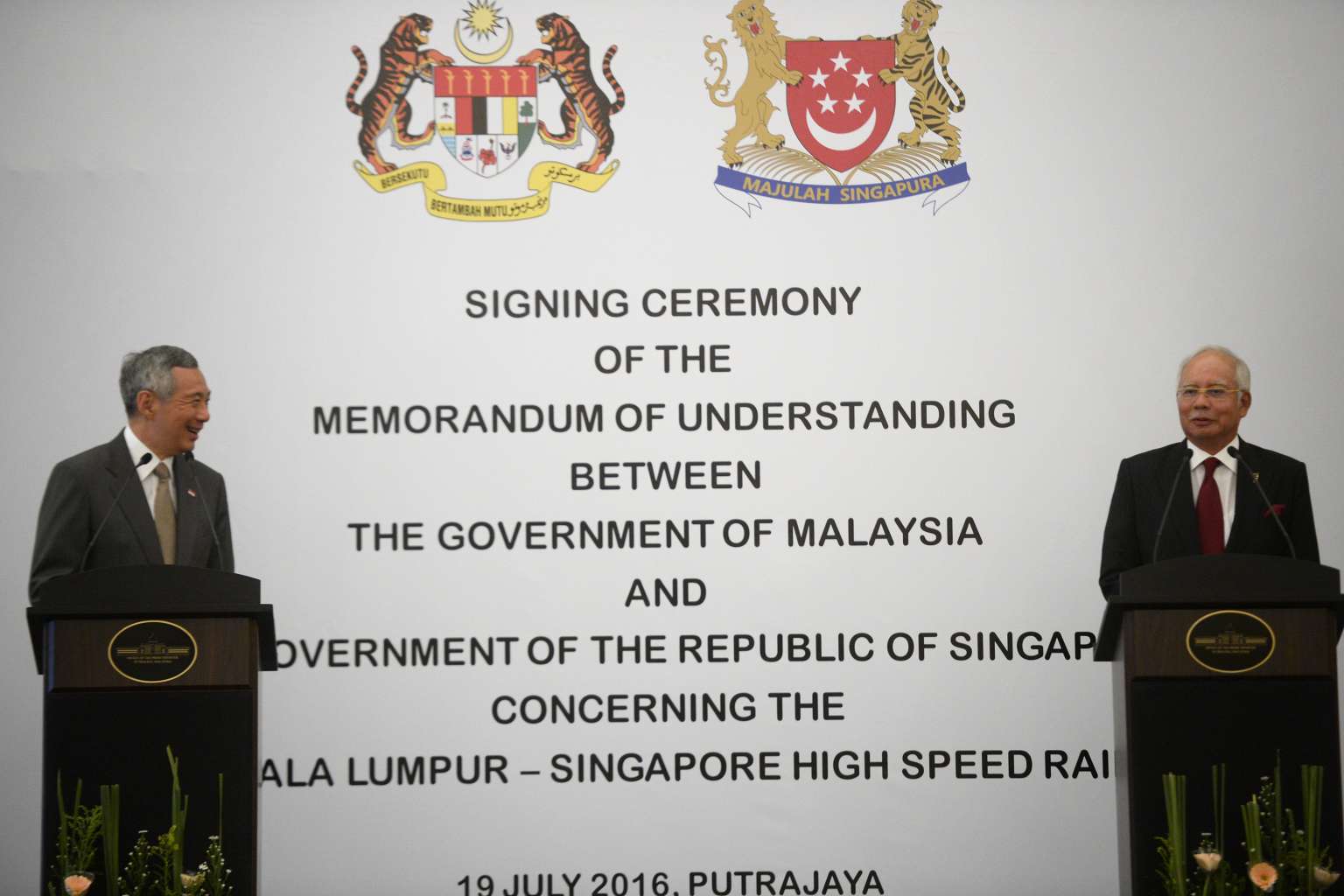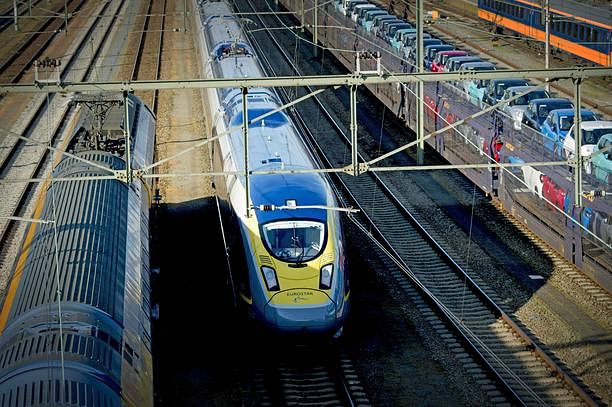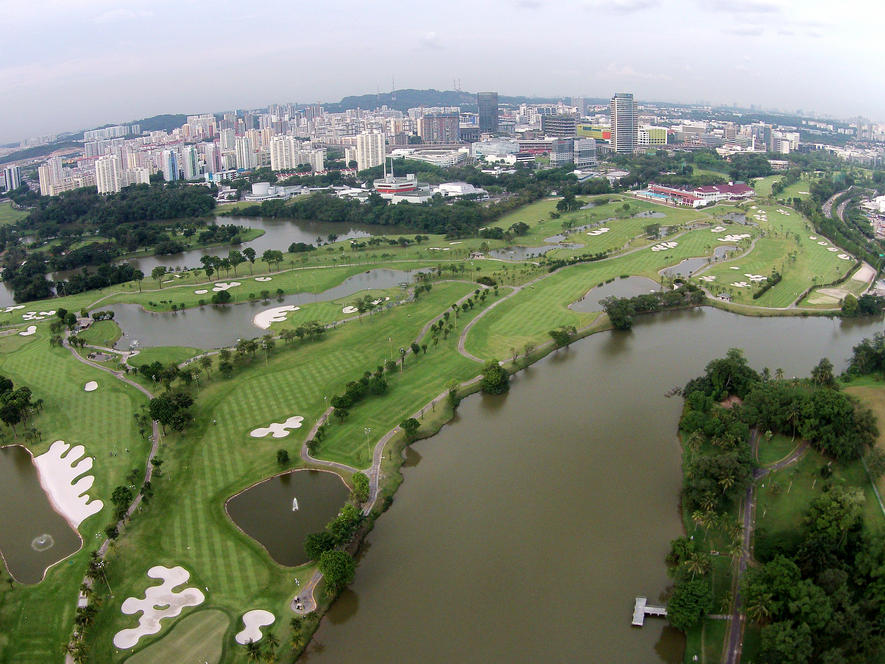From The Straits Times archives: Singapore-KL High Speed Rail
Sign up now: Get ST's newsletters delivered to your inbox

Singaporean Prime Minister Lee Hsien Loong (left) and Malaysian Prime Minister Najib Abdul Razak attend a press conference during the signing of the HSR MOU in Putrajaya, Malaysia, on July 19, 2016.
PHOTO: EPA
Follow topic:
SINGAPORE- Prime Minister Lee Hsien Loong was in Putrajaya on Tuesday (July 19) to witness the signing of a Memorandum of Understanding (MOU) on the highly anticipated High Speed Rail (HSR) project connecting Kuala Lumpur to Singapore, cutting travel time to 90 minutes.
The project was first made public back in 2013 at the Singapore-Malaysia Leaders' Retreat and has since made huge progress.
We take a look at the developments of the project over the years.
A BOLD GAME CHANGER

A picture taken on April 28, 2016 shows a Eurostar train arriving at Roosendaal station in Roosendaal. PHOTO: AFP
PHOTO: AFP
A breakthrough agreement was made to build a high speed rail link between Singapore and Kuala Lumpur by 2026, shortening time travel from four hours by car to 90 minutes. Such a project is modelled after the Eurostar link between Paris and London.
ATTRACTING TRAVELLERS
The HSR will definitely bring about immeasurable economic benefits to both countries, but just as important a consideration will be its ability to attract a sizable number of commuters on board.
A key consideration will be cost. A budget flight to Kuala Lumpur can be as low as $60 and given the huge price tag of the project, keeping ticket prices low will be a challenging task.
However, HSR can always consider providing additional services such as on-board entertainment, children play areas and even on-board spa facilities to attract commuters to ride the train.
Alternatively, other modes of transport, such as cargo trains, can be used. This will not only enhance trade but also help to subsidise operational and maintenance costs.
ENTERING A NEW PHASE

Conceptualising and agreeing on a project is a start, but to see it turn into reality, both governments now need to get a feel of interest levels and views of prospective players who have the expertise and desire to build the link.
A complex and challenging project, both governments jointly launched a request for information (RFI) on Oct 9, 2015.
This would help to gauge market interest and gather industry opinion as well as provide a platform for companies interested in participating in areas such as design, funding, operations and maintenance to step forward.
TESTING FEASIBILITY
Before tenders are called to finance and construct the 350km HSR line, the Land Transport Authority (LTA) has decided to seek the opinion of consultants to gauge the financial viability of the project as well as the commercial risks it may be exposed to.
In the first such move, consultants will also be asked to examine the possible commercial and operating models of the project and also decide if the project should be entirely state-funded or be launched as a public-private partnership (PPP).
DETERMINING THE ROUTE
The HSR was initially planned to share part of the Express Rail Link's (ERL) track in Malaysia, but after certain feedback from technical experts, such as potential safety risks, the Malaysian government has decided to look at a dedicated HSR line instead.
Though it remains unknown how fast the trains would travel, they will be faster than ERL coaches, which move at top speeds of 160kmh currently. Most of these trains around the world go at speeds of up to 350kmh.
JOSTLING TO TAKE THE LEAD
Even before major elements of the rail project have been ironed out, governments of China and Japan are already asserting their influence on both Singapore and Malaysia ahead of an international tender that will be called in the first quarter of 2017.
Executives from the East Japan Railway Company and officials from the Japanese Embassy in Kuala Lumpur met the Malaysian Transport Ministry officials in March this year to press their case for a lead role in the project.
On the other hand, China has pushed further, with Premier Li Keqiang writing a personal letter to Prime Minister Najib to reiterate Beijing's commitment to their investments in Malaysia.

